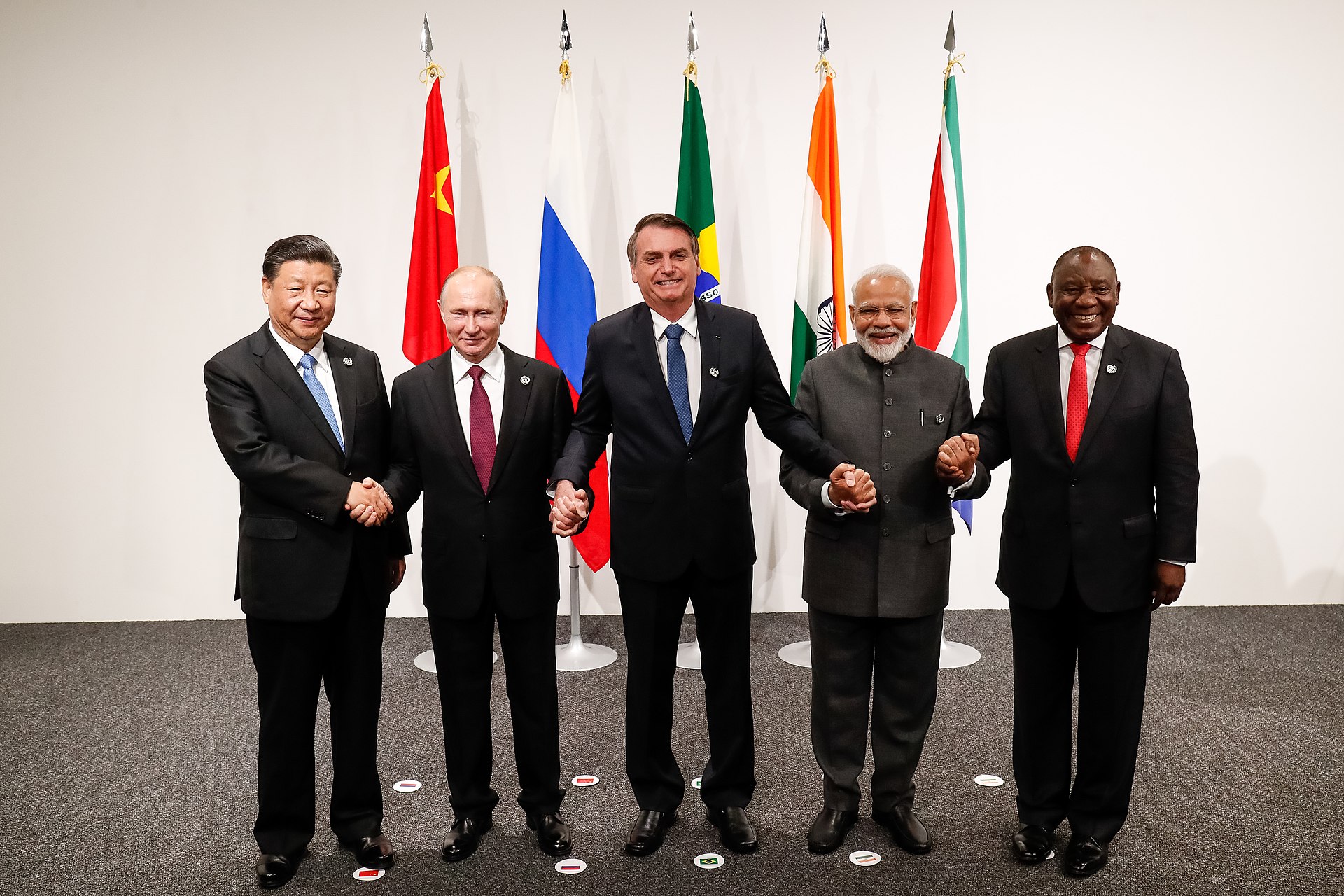Will a BRICS currency replace the dollar as a reserve currency?
The indications are growing that the BRICS+ countries – Brazil, Russia, India, China and South Africa – along with more and more other countries, want to replace the US dollar as a trading currency with their own currency. Is that technically possible?
For international trade, there is usually a leading currency, the world trade currency. All other coins are measured against this coin. At the moment that is the US dollar. That used to be different. For example, in the period up to the Second World War and for years afterwards, the British pound was the world’s trading currency.
In the two centuries before, the Spanish silver dollar. And so forth. There is therefore no imaginary chance that one day another currency will take over from the dollar. Is that day coming soon?
Contents
US sanctions make dollar unpopular
Countries have tried to get out of the omnipotence of the US dollar before. Often mentioned are Saddam Hussein of Iraq and Qadhafi of Libya. These attempts had little chance of success because these are only small countries. That changed with Russia’s invasion of Ukraine. As a result, Russia was hit by very extensive Western sanctions. Western governments confiscated Russian dollar reserves (over $600 billion). The Russians were also excluded from the American-controlled ‘banking internet’ SWIFT.
As a result, the Russians could no longer transfer and receive payments via the SWIFT system. This was a hard blow to the Russians, but it also made other countries think. Especially countries that like to conduct an independent foreign policy. Think of the other BRICS countries. Because what happened to the Russians can happen to them if the Americans don’t like them. That strengthened the call for an alternative currency not controlled by the West. And of course an alternative to SWIFT.
How does SWIFT work?
SWIFT is an electronic messaging system between banks. For example, if Juha Kekkonen from Helsinki wants to transfer two hundred euros to Vincenzo Ramirez from La Paz in Bolivia, he gives his bank the SWIFT code of Vincenzo’s bank and his account number. The bank then creates a SWIFT message and debits the amount, plus considerable costs, from Juha’s account.
Vincenzo’s bank has no correspondent relationship with Juha’s bank, so receives the message indirectly, through a correspondent bank that corresponds with European banks. She receives the SWIFT message, and processes the transaction. This bank converts the amount into about 700 bolivianos and deposits this amount into Vincenzo’s account.
The actual transfer of money goes through another system. Within the eurozone, for example, we know Target2. Juha’s bank transfers the 200 euros to the account of the correspondent bank, which directly or via one or more correspondent banks ensures that the money ends up in the account of the Bolivian bank. This can all take several days.
Alternative to SWIFT
As with all financial transactions, everything depends on trust. Only because there is a chain of institutions that trust each other, the correspondent banks, can payments be made via SWIFT. In itself it is technically not very difficult to build a better alternative to SWIFT. SWIFT, and additional systems such as Target, are slow, cumbersome and expensive.
For example, with the cryptocurrency Solana you can send money all over the world at a cost of around € 0.0002. At a bank such as Rabobank, a transfer to Kenya, for example, costs 20 euros. That is a sloppy hundred thousand times as much. Also, if Solana’s network is not down, the money will be in the other account within a few seconds. But it is precisely the latter that is a problem. The network must be stable, reliable and fraud-resistant. In that respect, the crypto world is still a bit too wild west.
Sanctions are forcing Russia into alternatives to the dollar
Until now there was no direct reason to opt for these kinds of radical solutions, but that has now changed for Russia. Due to the heavy Western economic sanctions and the cutting off of the Western financial system, Russia has been forced to get out of it. The other non-Western countries are happy to cooperate, because they know that one day they can also receive the same treatment from the West.
Collaboration currently takes place in two ways. Own alternatives to SWIFT, and payment systems outside the dollar and the euro.
The currency swap
The BRICS members currently use a traditional method of trading for this purpose, the currency swap. This means that two organizations, for example companies or the central banks of Russia and India, agree to buy an equal amount of currency from the other. So the Indians rubles, the Russians Indian rupees. If the Indians want to buy Russian oil, they only have to use the ruble account. The amount for the cargo of an oil tanker in rubles is then written off.
Conversely, the Russians in India can buy rice or boycotted spare parts of Western machines in India. They do that from their Indian rupee account. The mutual exchange rate is fixed in these currency swaps. So the participating parties do not run any currency risk.
Russia, China, India, Brazil, Iran and now Saudi Arabia are fully participating in this. The big advantage for these countries is that they can work without SWIFT and Western payment systems such as TARGET or the American CHIPS. So if the G7 decides to boycott them, they can continue to trade, albeit with more difficulty. Because the central banks run the necessary currency risk.
Its own BRICS currency
There are currently various plans circulating to introduce its own BRICS trading currency. It will probably not go further than that, because the BRICS countries differ too much from each other for that. Plans are circulating that speak of a link to the gold price, or to a basket of commodities. The most realistic option is that this trading currency will be the Chinese yuan, or a derivative thereof.
China is the largest trading partner of most countries in the world. It is not inconceivable that China will use this position to start issuing the new world reserve currency itself. At the moment, that would be unfavorable for China. Because Chinese products would then become much more expensive, as happened with American products in the past. Chinese investments in the US market would also lose a large part of their value.
On the other hand, China could use it to buy dollar debt, as well as euro and yen denominated debt, from African and Asian countries and exchange it with partner countries for loans in crisp new yuan. In this way, China could take over the dominant position of the west for a fraction of the cost.



